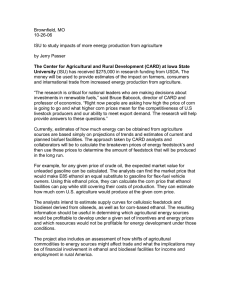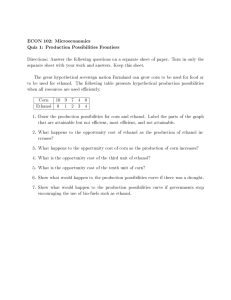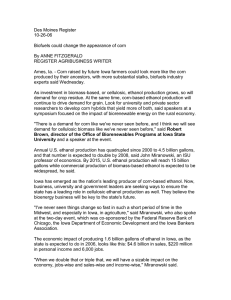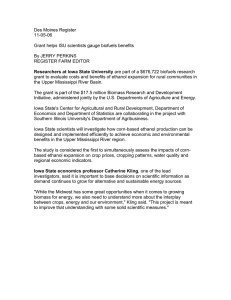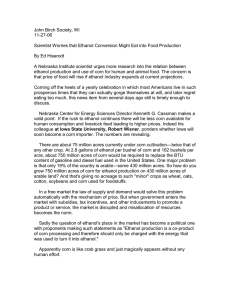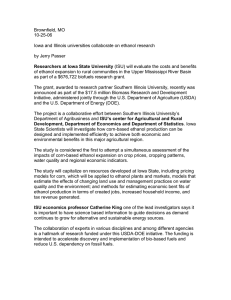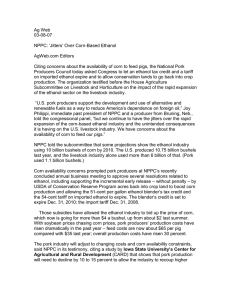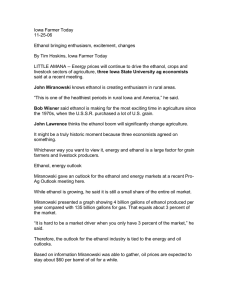Agri News, MN 11-21-06
advertisement
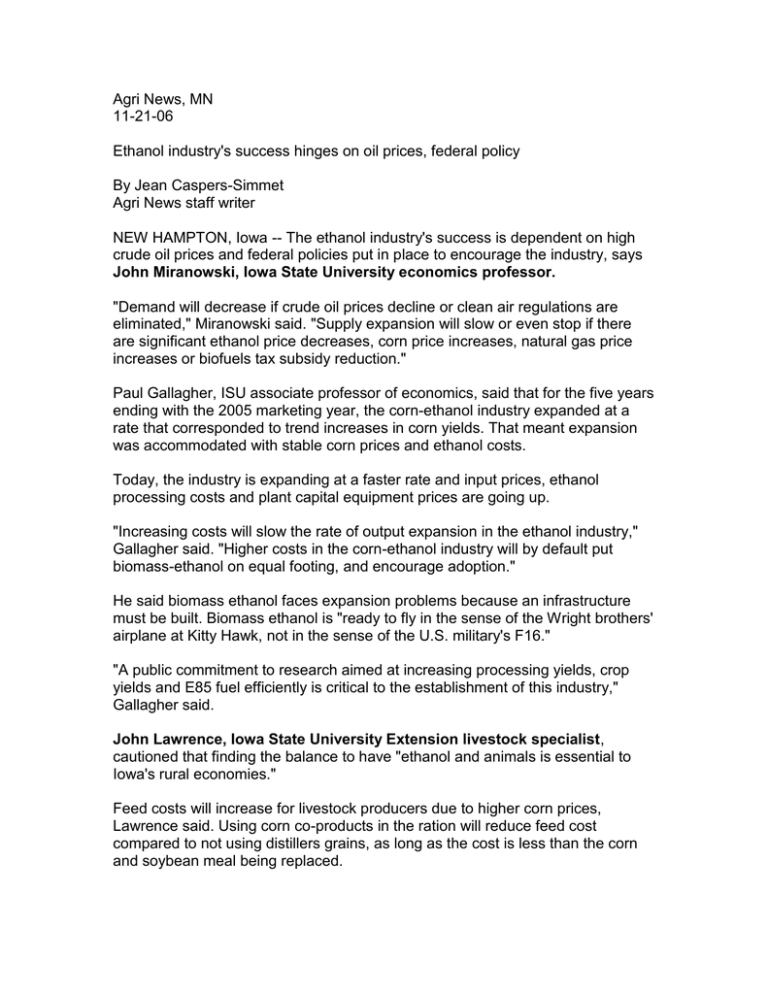
Agri News, MN 11-21-06 Ethanol industry's success hinges on oil prices, federal policy By Jean Caspers-Simmet Agri News staff writer NEW HAMPTON, Iowa -- The ethanol industry's success is dependent on high crude oil prices and federal policies put in place to encourage the industry, says John Miranowski, Iowa State University economics professor. "Demand will decrease if crude oil prices decline or clean air regulations are eliminated," Miranowski said. "Supply expansion will slow or even stop if there are significant ethanol price decreases, corn price increases, natural gas price increases or biofuels tax subsidy reduction." Paul Gallagher, ISU associate professor of economics, said that for the five years ending with the 2005 marketing year, the corn-ethanol industry expanded at a rate that corresponded to trend increases in corn yields. That meant expansion was accommodated with stable corn prices and ethanol costs. Today, the industry is expanding at a faster rate and input prices, ethanol processing costs and plant capital equipment prices are going up. "Increasing costs will slow the rate of output expansion in the ethanol industry," Gallagher said. "Higher costs in the corn-ethanol industry will by default put biomass-ethanol on equal footing, and encourage adoption." He said biomass ethanol faces expansion problems because an infrastructure must be built. Biomass ethanol is "ready to fly in the sense of the Wright brothers' airplane at Kitty Hawk, not in the sense of the U.S. military's F16." "A public commitment to research aimed at increasing processing yields, crop yields and E85 fuel efficiently is critical to the establishment of this industry," Gallagher said. John Lawrence, Iowa State University Extension livestock specialist, cautioned that finding the balance to have "ethanol and animals is essential to Iowa's rural economies." Feed costs will increase for livestock producers due to higher corn prices, Lawrence said. Using corn co-products in the ration will reduce feed cost compared to not using distillers grains, as long as the cost is less than the corn and soybean meal being replaced. "However, ethanol production doesn't have to increase the demand and price of corn much to offset the DDGs effect in hog diets or poultry diets," Lawrence said. "Ten percent of the ration is cheaper, but 90 percent is more expensive." Lawrence said that higher cost of production will result in losses for producers and ultimately a smaller livestock production sector. "Reduced production in Iowa leads to less employment and economic activity associated with animal agriculture," Lawrence said. "To put this in perspective, a 100-million-gallon ethanol plant will employ about 80 people and use 37 million bushels of corn. The same 37 million bushels of corn would feed 3 million hogs and employ more than 800 people to produce."

